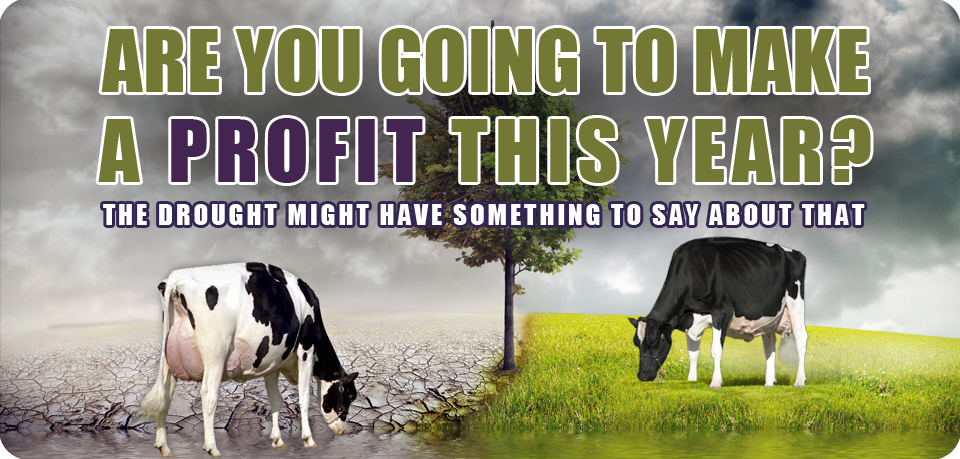Every day during this summer of 2012 dairy breeders are reading about or personally experiencing the challenges of feeding their dairy herd. The articles in the press deal with the cost of corn and soybeans as well as the quantity and quality for forages preserved or available for purchase. Since the cost of feed to produce a pound or kilogram of milk is usually 55 to 60% of the cost of production, feeding the dairy herd is extremely important.
In a recent article the Bullvine addressed key factors that contribute to profit on farm ( read Why Dairy Farmers Need To Know Their Key Performance Indicators). However, for many dedicated North American dairy cattle farmers the immediate challenge is to implement steps that will contribute to or assist with profitability until we have another crop-growing season. The following ideas are offered based on the results I saw from working with success farms participating in dairy farm management clubs.
A Check List for Managing
- Know your facts
A saying often herd is “If you don’t measure, you can’t manage.” So taking time to review the details on your last milk cheque, your current feed bills, your daily feed fed and the information for the past two years from your DHI printouts or from your farm management software reports, all are key to getting started. Also critical to taking positive steps is the farm manager’s attitude to problem solving on farm. Yes prices received and prices paid are important but most frequently they are mainly outside individual manager’s control. - Output per Cow
Simply put farms producing over 5 pounds or 2.3 kgs of fat plus protein per cow per day return between 25 to 40% more profit per cow per day than farms producing 4 pounds or 1.8 kgs per cow per day. Filling the bulk tank with 100 cows producing 55 pounds (25 kgs) or 79 cows producing 70 pounds (32 kgs) is what this equates to. Those extra 21 mouths to feed are paramount to profit. Moving the lower producing cows to dry pens, selling below average producers for meat or buying of bringing in, take care to protect biosecurity (read more Biosecurity – How Safe Is Your Dairy or Biosecurity: Control What’s Coming In, Going Out Or Going Around), animal about to calve or recently fresh are all steps that will move the herd to more profit per milking cow per day. - Dry Matter Intake (DMI)
Average DMI of at least 50 pounds (23 kgs) of feed are achievable. Herds with DMI’s over 55 pounds (25 kgs) make 15 to 25% more profit per cow per day than herds with a DMI of less than 44 pounds (20 kgs). However, feed intake averages and profit per cow per day are not achieved by feeding the average cow. Keys to achieving desired levels of DMI and profit are caring and grouping of cows and heifers three weeks before and after calving, feeding the highest quality forage to the cows producing the most milk and not overfeeding cows later in lactation in any year not just when feeds are in short supply or high in price. - Feed Quality
Without feed testing or knowing the quality of feeds, be it home grown or purchased feeds, decisions and corrective actions cannot be taken. Managing for profit and using feed resources wisely depend knowing the products you are working with. - The Heifer Herd
Managing for profit is greatly influenced by how the heifer herd is feed and managed. Not raising all heifer calves, feeding heifers according to their needs (high quality feed to heifers in their first three months), using milk replacer instead of keeping extra cows so calves can get be feed whole milk and breeding heifers to calve by 24 months of age all need re-consideration in times of tight feed supply, lower quality feeds, and expensive feedstuffs. Having 0.7 or 1.1 heifers per milking cow can significantly affect profit through feed cost, labour costs and overhead costs. (read 10 Ways Cool Calves Beat The Heat) - Manage Reproduction
In times of high costs, lack of plentiful feed supply and pressure on the time to manage, managers take steps (often inadvertently) not to check as often for heats or eliminate regular visits by the herd reproduction specialists. Current estimates run between $75 to $110 for every heat that a cow or heifer is either not bred on or does not conceive on. Of course that cost is a function of taking more feed, more labour, more animals on-farm and more time to manage. - The Basics are Important
We all know how nice it is to have fresh air to breathe, our climate controlled and a fresh glass of clean water. Well animals are no different. Clean waterers, lack of manure build-up near animals and clean air all lead to high performance by dairy cattle. Documented and delivered herd protocols are important and can be neglected in times of stress including when feedstuffs are in short supply.
The Bullvine Bottom Line
Success in business very often is associated with managing to be ahead of challenges rather than in reaction to circumstances. Profits on dairy farms depend on providing the crucial trinity, feed, environment and genetics. Doing only two of the three is not sufficient.

















Leave a Reply
You must be logged in to post a comment.